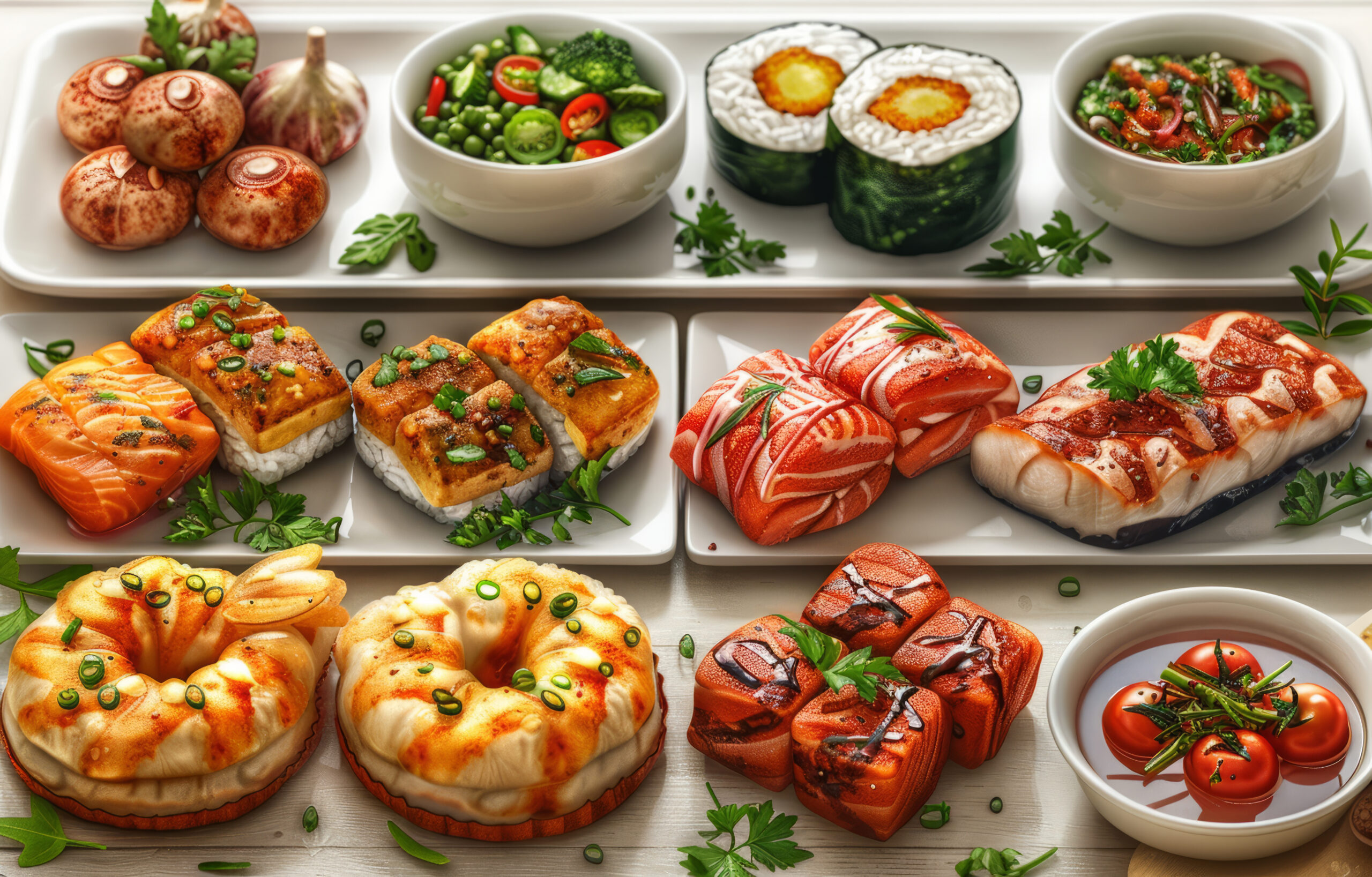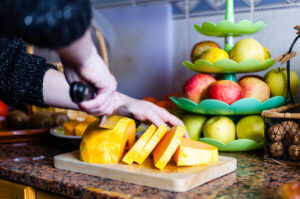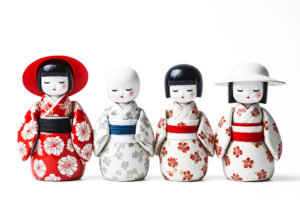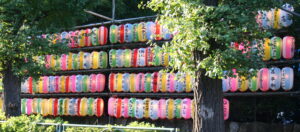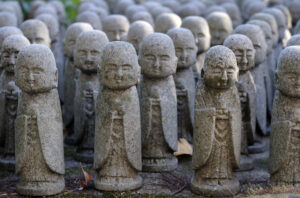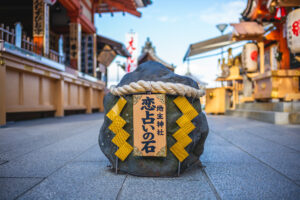In the heart of Japan, a unique art form flourishes—one that teases the senses without satisfying physical hunger. This is the world of fake food displays, a culinary illusion so masterfully crafted that it blurs the lines between art and appetite. From glistening sushi that never spoils to bowls of ramen that remain forever hot, Japan’s mastery of edible deceptions serves as both a cultural emblem and a window into the country’s rich tradition of craftsmanship. This article delves into the fascinating realm of Japan’s fake food, exploring its history, its artisans, and its impact on both local culture and global tourism.
Japan’s Culinary Illusions: An Introduction
Japan’s fake food, or ‘sampuru’, initially appears as a whimsical curiosity, yet it embodies a profound aspect of the nation’s culinary arts. Rooted in a dedication to aesthetic perfection, these displays capture the essence of real dishes with astonishing accuracy. Serving a practical purpose, these culinary replicas guide patrons through a visual feast, aiding in menu selection and setting expectations before the first bite is even taken. Beyond function, they represent Japan’s broader cultural affinity for meticulousness, precision, and harmony.
Crafting Appetite: The History of Fake Food
The history of fake food in Japan traces back to the early 20th century, evolving from wax to the more durable materials used today. Initially intended for restaurant window displays to attract customers, these replicas quickly became an integral part of the dining experience in Japan. The post-war boom saw a significant expansion in the variety and sophistication of fake food items, mirroring the country’s rapid economic growth and the diversification of its culinary landscape. Today, the tradition continues, with artisans dedicated to perfecting their craft and passing it on to future generations.
The Artisans Behind Japan’s Edible Deceptions
Creating fake food is an art that requires patience, skill, and an eye for detail. The artisans, often trained for years under the tutelage of masters, work with a variety of materials to achieve the right color, texture, and translucency. Each piece is handcrafted, painted, and assembled to mimic its real counterpart as closely as possible. These craftsmen and women take pride in their work, considering each creation a testament to their dedication and a contribution to a unique aspect of Japanese culture.
Materials and Methods: Crafting Culinary Mimicry
The process of making fake food involves several stages, from molding and sculpting to coloring and finishing. Materials such as PVC and silicone have replaced wax, offering greater durability and a more lifelike appearance. Artisans use real food items to create molds, ensuring that the final products are as authentic-looking as possible. The painting process is particularly meticulous, with artists applying multiple layers to capture the natural variations in color that real food presents. The result is a piece that can withstand the test of time, both in terms of physical durability and visual appeal.
From Sushi to Ramen: A Spectrum of Faux Foods
Japan’s fake food repertoire is as diverse as its culinary tradition. From intricate sushi pieces with translucent fish atop perfectly shaped rice to steaming bowls of ramen where every noodle is carefully positioned, the range is exhaustive. Seasonal and regional specialties also find their place in fake food displays, offering a glimpse into the breadth of Japan’s gastronomy. These replicas not only celebrate the country’s culinary diversity but also serve as an educational tool, introducing foreign visitors to dishes they might not otherwise encounter.
The Role of Fake Food in Japanese Dining Culture
In Japan, fake food is more than just a novelty—it’s an integral part of the dining experience. It bridges the gap between the kitchen and the customer, providing a visual menu that communicates beyond language barriers. This visual appeal is especially crucial in a country where presentation is as important as taste. Moreover, fake food displays help maintain a standard of presentation in the restaurant, ensuring that customers’ expectations are met with consistency. They celebrate the art of food presentation, a principle deeply embedded in Japanese culinary philosophy.
Behind the Scenes: A Visit to a Fake Food Workshop
A visit to a fake food workshop unveils the meticulous craftsmanship behind these culinary replicas. Artisans can be seen mixing colors to get the perfect shade of tuna or meticulously carving grooves into a piece of fake tempura. The air is filled with a sense of concentration and dedication, a testament to the artisans’ commitment to their craft. Workshops often welcome visitors, offering a behind-the-scenes look at the creation process and even hands-on experiences where one can try their hand at making their own piece of fake food.
Realistic Replicas: The Science of Fake Food
The realism achieved in fake food is not just a matter of artistic talent; it’s also a science. Understanding the properties of different materials and how they interact plays a crucial role in creating lifelike replicas. Innovations in materials science have allowed artisans to replicate textures and translucency never before possible, pushing the boundaries of realism in fake food. This marriage of art and science ensures that the replicas not only look real but feel real to the touch, further blurring the line between the edible and the inedible.
Fake Food in Tourism: Attracting Visitors With Art
For many visitors to Japan, discovering the world of fake food is a highlight of their trip. It offers a unique insight into Japanese culture and an unusual, tactile way to explore the country’s culinary offerings. Fake food workshops and museums have become popular tourist attractions, offering educational and interactive experiences that celebrate this unique Japanese art form. As a result, fake food has transcended its role as a dining aid to become a cultural ambassador, attracting visitors with its blend of artistry and culinary representation.
Collectibles and Souvenirs: The Fake Food Market
Beyond restaurant displays, fake food has found its way into homes and collections around the world as unique souvenirs and collectibles. From keychains and fridge magnets to detailed replicas for display, the demand for fake food items continues to grow. This has opened a new market for artisans, who now create pieces specifically designed for collectors and tourists. These items allow individuals to take a piece of Japanese culinary artistry home with them, serving as a reminder of their experiences and the cultural richness of Japan.
The Future of Fake Food: Trends and Innovations
As technology advances, so too does the art of fake food. 3D printing and new materials offer possibilities for even greater realism and efficiency in production. Meanwhile, social media has provided a platform for artisans to share their work with a global audience, sparking interest and appreciation beyond Japan’s borders. The future of fake food looks promising, with innovations likely to further enhance its realism and appeal. As long as there is a fascination with Japanese cuisine and culture, the art of fake food will continue to evolve and captivate.
Japan’s art of appetite, embodied in its mastery of fake food displays, stands as a testament to the country’s dedication to craftsmanship, aesthetic appeal, and culinary culture. From the meticulous artisans who bring these edible deceptions to life to the tourists who marvel at their realism, fake food has woven itself into the fabric of Japanese society. As it continues to evolve with new trends and innovations, this unique art form promises to enchant and educate future generations, solidifying its place in Japan’s gastronomic and cultural legacy.
